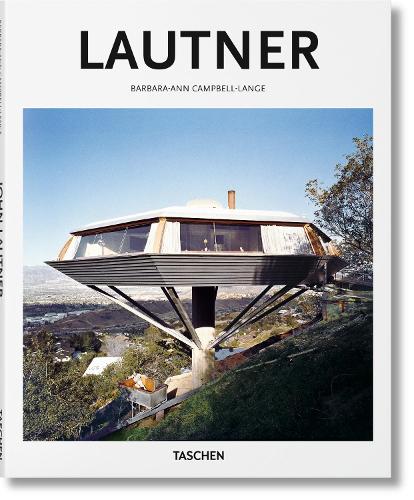
Lautner
(Hardback)
Publishing Details
Lautner
By (Author) Barbara-Ann Campbell-Lange
Edited by Peter Gssel
Taschen GmbH
Taschen GmbH
29th September 2016
21st August 2020
Germany
Classifications
General
Non Fiction
Individual architects and architectural firms
History of architecture
720.92
Physical Properties
Hardback
96
Width 210mm, Height 260mm, Spine 13mm
629g
Description
With his geometric structures perched upon the hillsides, beaches, and deserts of California, John Lautner (1911-1994) was behind some of the most striking and innovative architectural designs in mid-20th-century America.
This introductory book brings together the most important of Lautner's projects to explore his
his ingenious use of modern building materials and his bold stylistic repertoire of sweeping rooflines, glass-paneled walls, and steel beams. From commercial buildings to such iconic homes as the Chemosphere, we look at Lautner's sensitivity to a building's surroundings and his unique capacity to integrate structures into the Californian landscape. With several of Lautner's houses now labeled Los Angeles Historic-Cultural Monuments, we'll also consider the architect's cultural legacy, as much as his pioneering of a visual paradigm of 1950s optimism, economic growth, and space-age adventure.
Author Bio
Barbara-Ann Campbell-Lange studied architecture in London, New York, and Cambridge. She is a director of the Campbell-Lange Workshop and lectures at the Royal College of Art. Peter Gssel runs an agency for museum and exhibition design. He has published TASCHEN monographs on Julius Shulman, R. M. Schindler, John Lautner, and Richard Neutra, as well as several titles in the Basic Architecture series.
